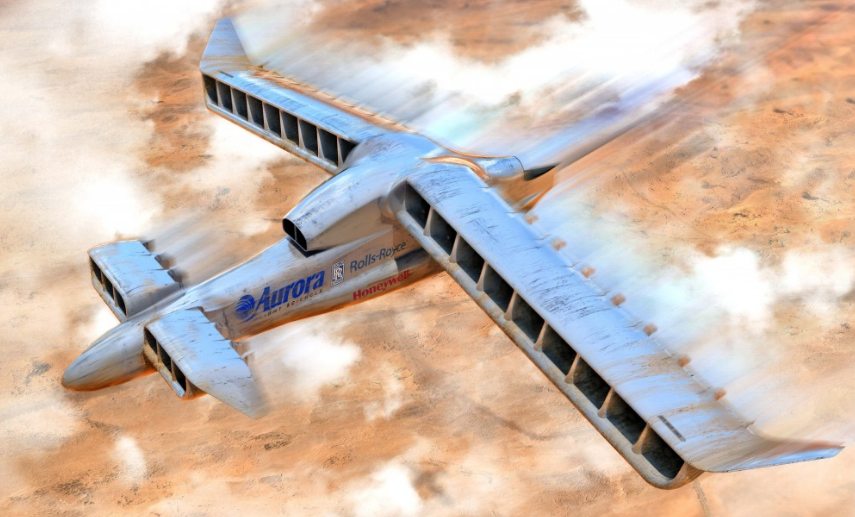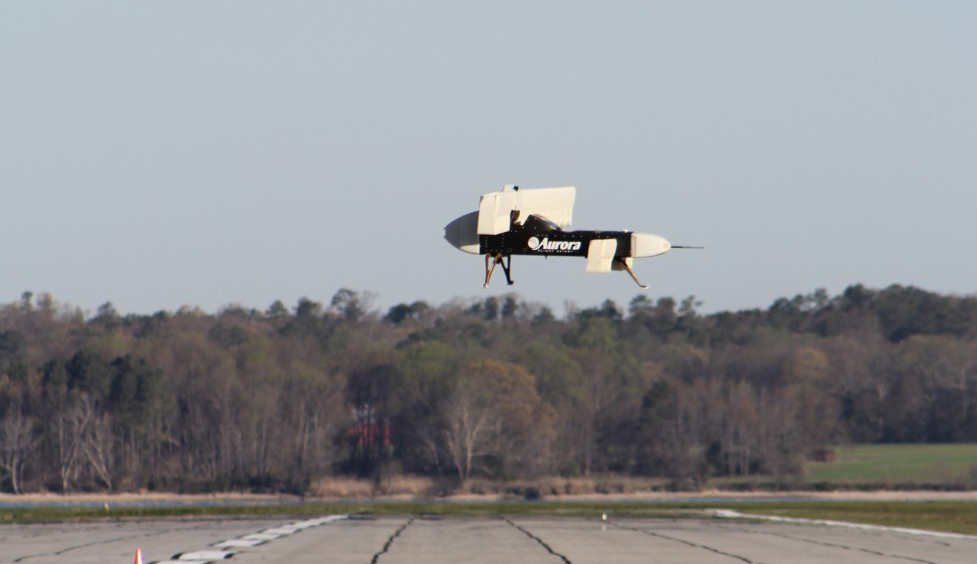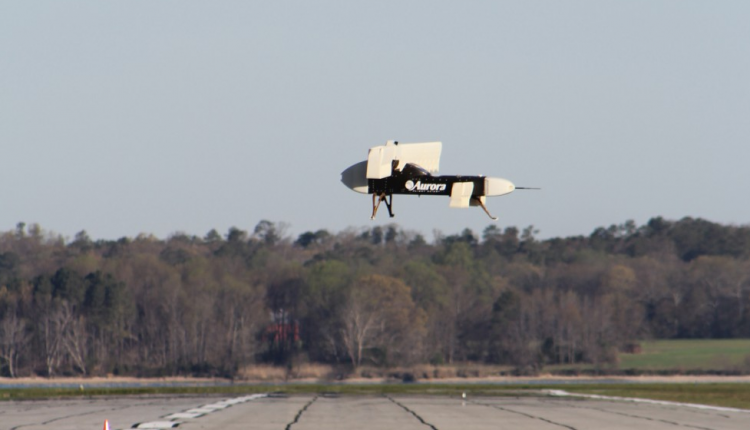Last month DARPA announced the development of a vertical take-off and landing demonstrator aircraft that can achieve a top flight speed of 300 kt to 400 kt, with up to a 75% increase in hover efficiency compared to other VTOL aircraft. The agency left the development of the first aircraft in aviation history to demonstrate distributed hybrid-electric propulsion using an innovative synchronous electric-drive system in the hands of Aurora Flight Sciences.

Now we can witness the prototype plane take off successfully for the first time.
“The successful subscale aircraft flight was an important and exciting step for Aurora and our customer,” said Tom Clancy, Aurora’s chief technology officer. “Our design’s distributed electric propulsion system involves breaking new ground with a flight control system requiring a complex set of control effectors. This first flight is an important, initial confirmation that both the flight controls and aerodynamic design are aligning with our design predictions.”

The prototype aircraft that took flight weighs 325 pounds and is just a 20% scale flight model of the final craft Aurora is building for DARPA over the next two years. The wing and canard of the vehicle are made of a hybrid structure of carbon fiber and 3D-printed FDM plastics, which help to create complex structural and aerodynamic surfaces with minimal weight.
The unmanned aircraft take-off, hover and landing was controlled by Aurora employees at a nearby ground control station.
The company’s LightningStrike team will spend the next year working on the plane’s flight control system and configuring the full scale VTOL X-Plane demonstrator.


Comments are closed, but trackbacks and pingbacks are open.